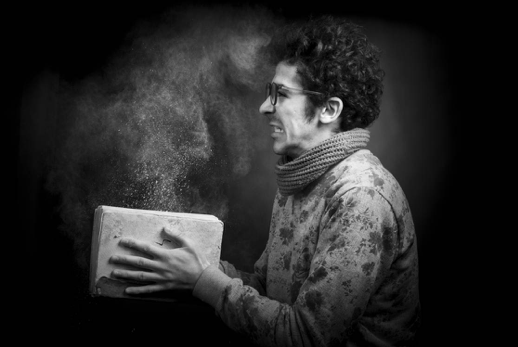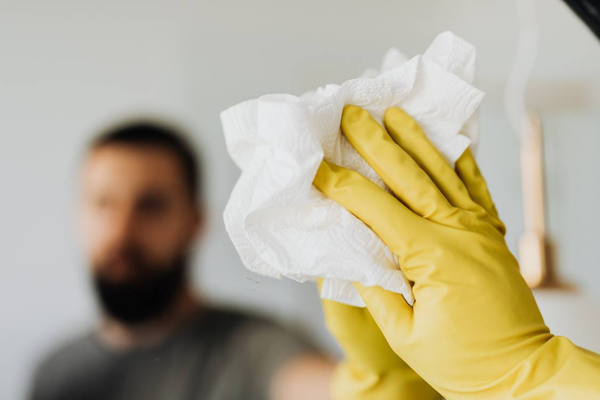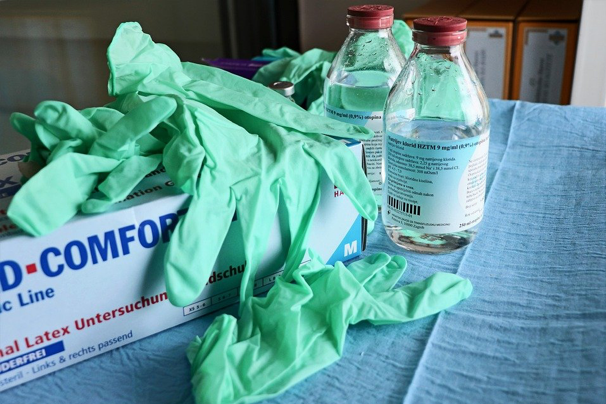Monthly Archives: October 2020
Can You Cure Any Allergies?
While there’s no cure for allergies, you can alleviate symptoms. Prevention is easier when you know which allergens you are allergic to. You should try various methods and techniques to avoid any contact with allergens. For instance, if you are allergic to insect stings, cover all the windows and doors and avoid walking barefoot in your backyard or front lawn.
You can also take medications for allergies. However, if you take too much medication, you may develop an allergic reaction to them. Immunologists will help you in finding the best medication, depending on your allergy and condition. You can also follow disease-modifying treatments. Talk to an immunologist about immunotherapy, and they will help you understand the procedure. These therapies cannot cure your condition but will provide relief and reduce the sensitivity against allergens you are allergic to.

(Source)
Why We Get Allergies
Your body’s immune system creates antibodies to protect you from harmful substances. To eliminate threats and foreign particles, the body generates IgE or Immunoglobulin E. This chemical messenger signals to cells that they need defenses against the threat. If you are allergic to environmental allergens such as dander or pollen, you might have more IgE levels. Even food allergies can cause a high level of IgE.
After some time of exposure, your immune system develops a memory of the allergen. This can be helpful in many conditions, such as responding quickly. Your medication works due to this response. However, when you are allergic to an allergen, the response increases, and your immune system overreacts. This will cause allergic symptoms such as coughing, sneezing, and a runny nose. For every allergen, there’s a specific type of IgE. That is why we are prone to more than one allergen.
Why Are Allergies so Hard to Cure?
When your immune system overreacts to allergens such as pet dander or peanut butter, it makes specific IgE, such as peanut IgE or dander IgE. Then, your immune system memorizes that allergen for future attacks—the IgEs link to mast cells. Then, the mast cells release histamine whenever an allergen enters your body, which causes your body to overreact. Hence, responses to allergens become a part of your immune system. The more you react with the allergen, the stronger the response gets. That is why it is impossible to change this process of the immune system.
General Treatment of Allergies
Below, you will find some treatments for allergies:
1. Immunotherapy
An immunologist will recommend this technique if they are not aware of allergens you are allergic to or your condition is severe. They will inject shots of adrenalin of other allergen extraction methods. Furthermore, they might also recommend pills that you need to place under your tongue.
2. Medications
Immunologists plan your medication to reduce the symptoms of your allergy. This will help you prevent your immune system from overreacting. An immunologist might provide eye drops, nasal sprays, liquid suspensions, or pills. Usually, pollen allergies require these types of treatments.
3. Allergen Avoidance
This is the best preventative method for allergic reactions. In this method, immunologists will determine the substance you are allergic to. Then, they will develop strategies to avoid the reaction. This method can drastically reduce the occurrence of symptoms.
4. Emergency Epinephrine
When your condition is serious, you need to keep injections of adrenaline along with you. So whenever a triggering substance triggers your allergy, you can inject the shots to instantly alleviate symptoms.

(Source)
Changes in Lifestyle
Many allergy symptoms improve through various adjustments you can follow at home.
· Humidity
When the reason for your allergy is humidity, you can install ventilation fans in your washroom to keep the damp locations dry. Furthermore, you can fix leakages in your house to keep humidity levels low.
· Dust Mites
You need to keep your home clean from pet dander and dust mites. Wash the toys and beds with hot water, and vacuum your home regularly, especially when you have carpet. Remember, carpets can store large amounts of mites and dander.
· Sinuses
You need to rinse your sinuses with water and salt solution. This will improve your nasal irrigation. People use net bottles when they experience allergies from infection.
Conclusion: Consult an Experienced Allergist
You cannot completely treat your allergies, but an immunologist can help identify the allergen and design ways to avoid it. This will not only protect you from overreacting but also increase the chances of recovering from your allergy. However, recovery is very rare.
Are you looking for an immunologist? Dr. Boyan Hadjiev is one of the best immunologists in New York City. He is capable of diagnosing and managing your allergies with expertise. To make an appointment, call us at 212-319-5282 to schedule an appointment at our offices. You can also consult with our experts through telemedicine from anywhere on the globe.
Sources
https://www.webmd.com/allergies/can-allergies-be-cured
https://www.mayoclinic.org/diseases-conditions/allergies/diagnosis-treatment/drc-20351503
https://www.carolinaasthma.com/blog/what-causes-a-person-to-develop-allergies/
What Is A Latex Allergy?
What is a latex allergy? Manufacturers make latex from a rubber tree, and it includes various proteins that can trigger an allergic reaction. Latex is not a harmful substance, but when you have a latex allergy, your immune system considers the material to be harmful. A latex allergy can induce reactions that include hives and itchiness. Other than that, this allergy can also lead to anaphylaxis and have a life-threatening effect on your body. When you have anaphylaxis shocks, you will find it difficult to breathe as your throat will swell. An immunologist can diagnose and identify if you have a latex allergy. They can also identify if you’re at risk of developing one. You can prevent allergic reactions and serious consequences by understanding more about this condition. This article will help you understand more about latex allergy.

(Source)
Symptoms of a Latex Allergy?
When your body comes in contact with latex, you may experience an allergic reaction at the region of contact. You can call this rash or dermatitis. Here are some of the symptoms of latex allergy so that you can identify this health condition:
- Eczema (cracking and weeping skin)
- Hives
- Skin rash
- Itchy hands
These are temporary reactions and will go away naturally over time. The proteins in latex also become airborne. When this happens, the person allergic to it inhales and develops a severe condition. Symptoms of this condition are:
- Dizziness
- Rapid heartbeat
- Vomiting
- Diarrhea
- Abdominal pain
- Shortness of breath
- Stuffy or runny nose
- Red skin
- Tongue, lips, and skin swells
Causes
Your body considers latex as a threat to the body and triggers immune cells or antibodies to fight. When you face latex exposure again, antibodies signal the immune system that something is not right. Your body’s immune system releases chemicals, including histamine, which results in various symptoms. The symptoms grow worse if you are continuously in contact with latex. This condition is called sensitization. Latex will affect your body in different ways, depending on the condition. Below you will find those ways:
Through Direct Contact
This is the common reason to develop latex allergy. When you touch the latex material, you start reacting to the protein components. The items include balloons, condoms, and latex gloves.
Through Inhalation
All latex products, especially gloves, release airborne particles. When you inhale those protein particles, your immune system starts reacting, causing an allergic reaction. The quantity of airborne particles differs from one brand to another.
Manufacturers develop various latex products from man-made latex or synthetic latex, such as latex paint, which is mostly non-allergic.
Latex Allergy Diagnosis
Whether you develop any symptoms of an allergic reaction or not, your blood or skin tests will indicate if you are suffering from latex allergy. An immunologist will diagnose you by asking about any symptoms and conducting tests. Symptoms of an allergic reaction include trouble breathing, irritation, teary eyes, hives, skin rashes, and itching upon contact with latex or other rubber products. They will also perform various skin tests to check if you really have a latex allergy.
Treatment for Latex Allergy
Unfortunately, there is no treatment for this allergic condition. When you have a latex allergy, the only way to avoid any reaction is by preventing contact with the material. If you experience serious skin irritation, you can take corticosteroid medicines or antihistamines. However, if your condition is severe, you can control the reaction through IV fluids, epinephrine, and consulting a medical professional such as an immunologist. Some immunologists also recommend carrying epinephrine shots in case of an emergency. Other than that, you should carry around a card or a tag that informs passersby about your latex allergy.

(Source)
Visiting the Doctor
When you make an appointment with an immunologist or doctor, you need to inform them about your latex allergy. This way, your physician or dentist will avoid using any instrument that contains latex, such as gloves, etc. If your health condition requires that you stay in the hospital, they will keep you in a separate room without any product containing latex.
Food Triggers
Some fruits and vegetables contain proteins similar to those of latex. That can also trigger Latex allergy when you touch, smell, or eat that food. Some of these foods include wheat, tomato, potato, pineapple, hazelnut, kiwi, grape, cherry, banana, avocado, and many more.
Conclusion: Contact Top NYC Allergist Boyan Hadjiev
Sometimes, latex allergy triggers anaphylaxis, which can be life-threatening. In this condition, your esophagus swells, and you will experience difficulty in breathing. While experiencing an allergic reaction, you should immediately visit an immunologist as they are experts in handling and treating conditions related to the immune system.
You can contact our offices to make an appointment with a professional immunologist. We also provide telemedicine so that you can avail of treatment through online live video chat and consult with Dr. Boyan Hadjiev instantly or call us at 212-319-5282.
Sources
https://www.mayoclinic.org/diseases-conditions/latex-allergy/symptoms-causes/syc-20374287
https://www.webmd.com/allergies/latex-allergies
https://www.healthline.com/health/allergies/latex#symptoms
Serving all of New York City and the Tri State Area including Zip Codes: Top Allergist NYC Midtown, Chelsea and Clinton: 10001, 10011, 10018, 10019, 10020, 10036 | Gramercy Park and Murray Hill: 10010, 10016, 10017, 10022 | Greenwich Village and Soho: 10012, 10013, 10014 | Lower Manhattan: 10004, 10005, 10006, 10007, 10038, 10280 | Lower East Side: 10002, 10003, 10009 | Upper East Side: 10021, 10028, 10044, 10128 | Upper West Side: 10023, 10024, 10025
